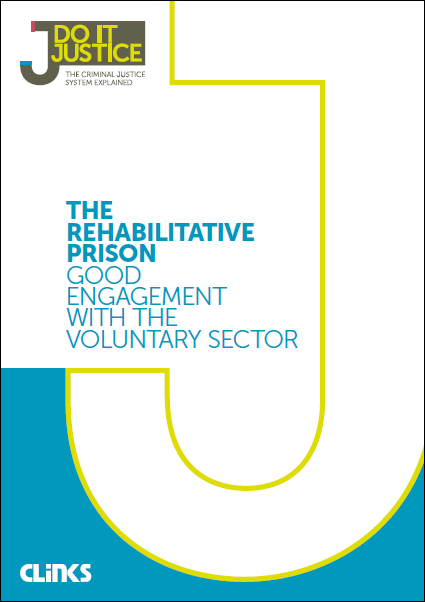The voluntary sector has a long history of delivering services to those in prison and through the gate into the community. Organisations make a vital contribution to the reduction of reoffending, as well as providing information and support to families of offenders. The presence of the voluntary sector in custodial settings helps to bring some normality to the lives of those in a tightly structured environment and provides a bridge to the outside world, which can offer hope and a vision of a life post-release.
So to hear the Prime Minister’s announcement, calling for prisons to become “places of positivity and reform…; where the environment is one of rehabilitation and mending lives” chimes with our members’ and other voluntary sector organisations’ desire to see people in prison offered better access to the services that they need, to support their desistance from crime and their eventual resettlement back into the community.
Details of the proposed reform prisons are yet to be announced, but along with the ongoing Transforming Rehabilitation agenda, we hope that these strategies are clear in their commitment to working closely with the voluntary sector and understand the vital role it has in delivering rehabilitation and resettlement services.
Collaborative solutions
Whilst staff benchmarking and public sector spending have reduced resources, making the co-ordination and sustainability of services more challenging, Clinks has had a positive dialogue with prison service staff, Community Rehabilitation Companies and voluntary sector organisations. They have all shown how a more co-ordinated approach can achieve better results, make the most of available resources, strategically support and grow voluntary sector engagement and improve the support available to prisoners. An open dialogue with staff from across different sectors and organisations has provided Clinks with vital information and allowed us to create a new guide on how prisons can be more collaborative and more innovative.
A new guide for prisons
‘The Rehabilitative Prison: Good engagement with the voluntary sector’ provides prison governors and staff with practical guidance on effective engagement. It clearly lays out five key areas of focus, with suggested activities and useful tips. The short guide ends with some further resources to support wider networking and engagement with the sector.
Five good practice points
The areas of focus are:
- Making links with the voluntary sector
- Knowing how the voluntary sector work fits into the prison and how to get projects established
- Co-ordinating the voluntary sector in the prison
- Good communication with the voluntary sector
- Skills sharing between prison and voluntary sector staff.
Clinks’ prison work
This guide forms part of Clinks’ wider prison work and complements a recently published Clinks discussion paper ‘The Rehabilitative Prison: What does ‘good’ look like?’ which aims to provide an early opportunity for voluntary sector organisations to contribute views on the forthcoming prison reforms. You can access both the documents and more information here. For more information contact Louise Clark louise.clark@clinks.org 07870 384569
We welcome your comments on the guide and how you might use it to plan and develop your prison voluntary sector engagement.
Click here to download 'The Rehabilitative Prison: Good engagement with the voluntary sector'
What's new
Blogs
Homelessness Strategy Blog
Publications
The Young Review - 10 Years On
Latest on X
The role is for a leader from an organisation focused on racially minoritised people, with expertise in service delivery, policy, advocacy, or related areas in criminal justice. Racial disparities are present at every CJS stage. This role ensures these voices are central in shaping policy to help address and eradicate them. Apply by Mon 18 Nov, 10am. More info: https://www.clinks.org/voluntary-community-sector/vacancies/15566 #CriminalJustice #RR3 #RacialEquity

